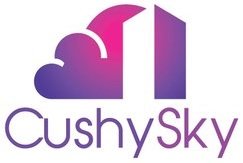Executive Summary:
Organizations across industries are re-evaluating the systems and processes that support their core operations. While many have made incremental improvements to legacy ERP platforms, others are beginning to explore more modern alternatives that better align with today’s business demands.
This white paper outlines the key reasons many companies are choosing to move on from traditional ERP systems in favor of cloud-based platforms such as Oracle Fusion Cloud Applications. It also highlights considerations for planning, adopting, and gaining value from such a shift — offering practical insights rather than prescriptive advice.
Whether your organization is assessing its current ERP environment or actively considering a new path, this guide is intended to support thoughtful evaluation and long-term planning.
1. Evolving Expectations for Enterprise Systems
In recent years, many organizations have experienced challenges that traditional ERP systems were not originally designed to address. These include:
-
Supporting increasingly distributed workforces
-
Adapting quickly to supply chain or regulatory disruptions
-
Accessing timely, reliable data for decision-making
-
Reducing manual processes to improve efficiency
Some legacy ERP systems remain functional, but for many businesses, keeping them aligned with evolving requirements has become more difficult and costly over time.
2. Common Limitations of Legacy ERP
As systems age, companies often encounter:
-
Siloed data and disconnected modules, requiring manual reconciliation
-
Cumbersome reporting tools, with limited real-time visibility
-
Complex or infrequent upgrades, increasing reliance on IT resources
-
Limited support for automation, mobility, or emerging technologies
These issues may not be universal, but they are familiar to many organizations that have operated on legacy platforms for several years or decades.
3. Why Some Organizations Are Moving to Oracle Fusion Cloud
While every business has its own context, a growing number of companies have opted to modernize using Oracle Fusion Cloud Applications. This decision is often driven by a desire to:
-
Simplify architecture with a unified platform across functions like Finance, HR, and Procurement
-
Access real-time data and embedded analytics for faster, more informed decision-making
-
Benefit from regular updates delivered through a cloud-native SaaS model
-
Take advantage of automation and intelligent features (e.g., alerts, workflow suggestions) without extensive custom development
Oracle Fusion Cloud is offered as a modular suite, which allows organizations to adopt only the components they need and expand over time if desired.
4. Coexistence and Gradual Migration Are Possible
Not all organizations are ready for a full-scale transition. One of the advantages of modern cloud ERP platforms is the ability to support coexistence strategies, where certain legacy systems are retained while others are replaced incrementally.
Examples may include:
-
Running Fusion Cloud Financials while maintaining existing HR systems
-
Implementing Procurement or Planning modules alongside existing ERP platforms
-
Using integration tools to allow data to flow between systems during the transition
This flexibility can reduce risk, minimize disruption, and provide time for stakeholder alignment and change management.
5. Understanding the Difference Between Hosted and Cloud-Native ERP
It’s worth noting that some ERP platforms are offered in hosted environments but were originally designed for on-premises use. While these systems may provide remote access and managed infrastructure, they typically:
-
Require manual upgrades
-
Use older integration frameworks
-
Lack embedded analytics and automation
-
Have limited extensibility compared to true SaaS platforms
In contrast, Oracle Fusion Cloud was developed specifically for the cloud, and its quarterly updates, unified data model, and integration of technologies like AI/ML are inherent features — not add-ons.
6. Starting a Modernization Journey: What to Consider
Before making any changes, it’s helpful to assess both business needs and technical readiness. Key questions might include:
-
Where are the current pain points or inefficiencies?
-
Which areas would benefit most from improved visibility or automation?
-
What are the dependencies between existing systems and processes?
-
How ready is the organization for change — from both a leadership and user perspective?
A phased or modular approach can provide a manageable path forward while aligning with broader strategic goals.
Conclusion: Moving at the Right Pace with the Right Purpose
Modernizing enterprise systems is a significant decision, and it should reflect both current business needs and future aspirations. While many companies have found value in moving from legacy ERP to Oracle Fusion Cloud, each organization’s path is different.
The intent of this white paper is not to prescribe a specific solution but to highlight the reasons why others have made the transition — and to offer a starting point for those evaluating whether now is the right time to consider a change.
If you’re currently exploring modernization strategies, CushySky can support you in evaluating options, planning transitions, and ensuring the change delivers long-term value — not just short-term upgrades.


